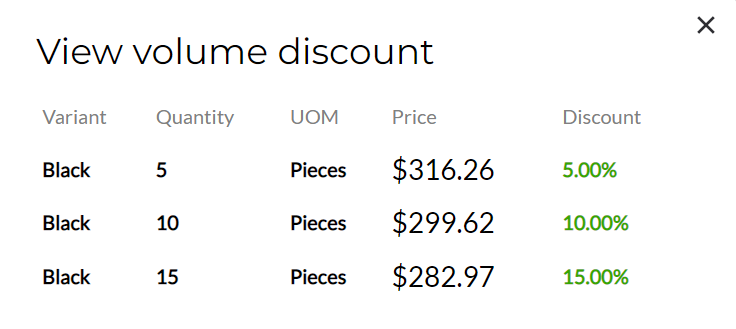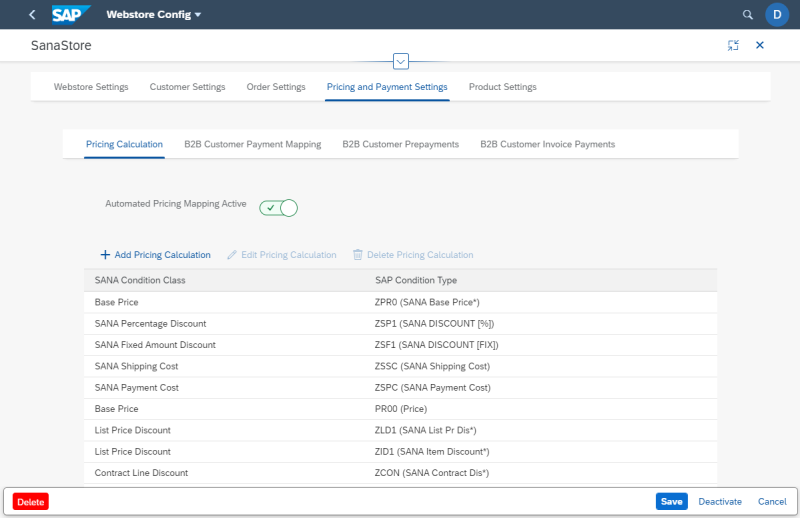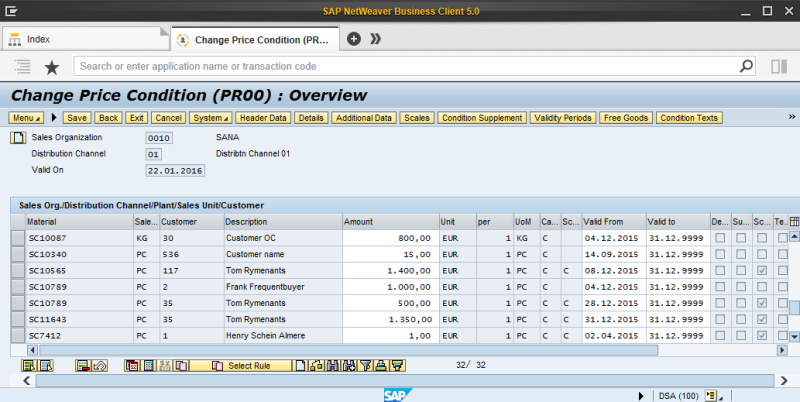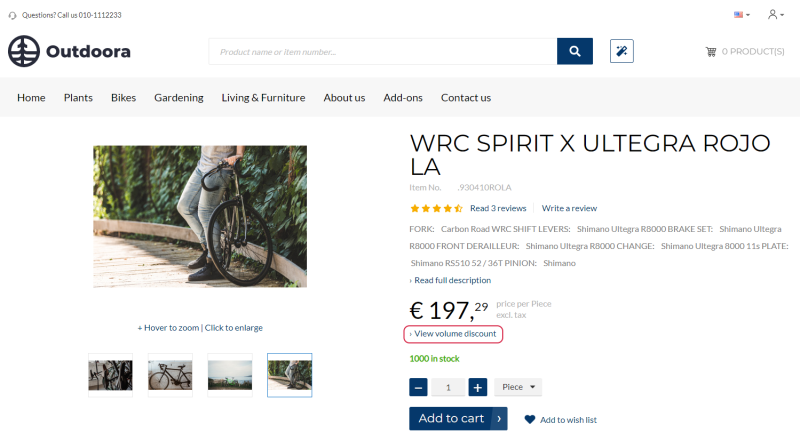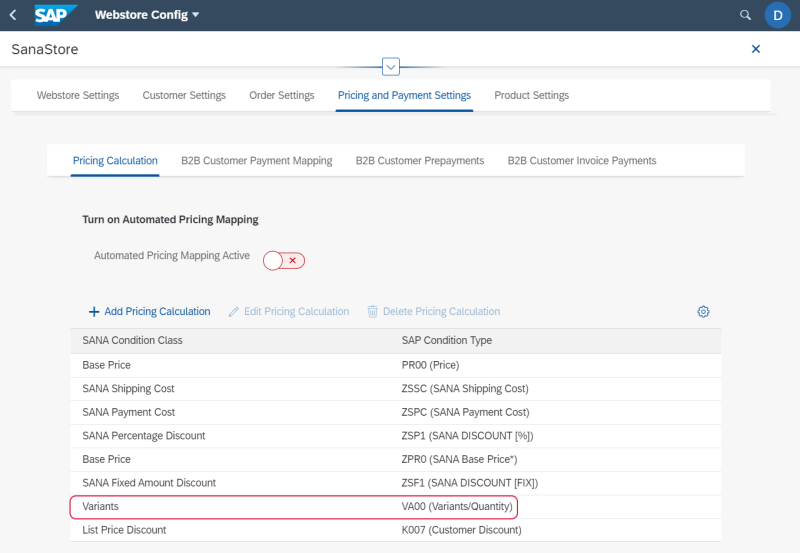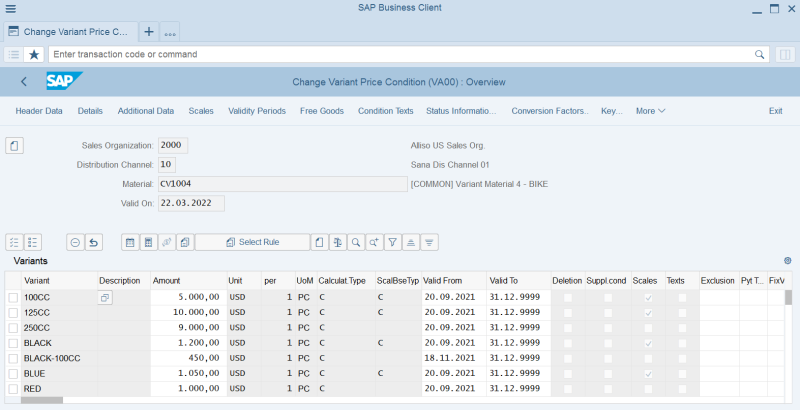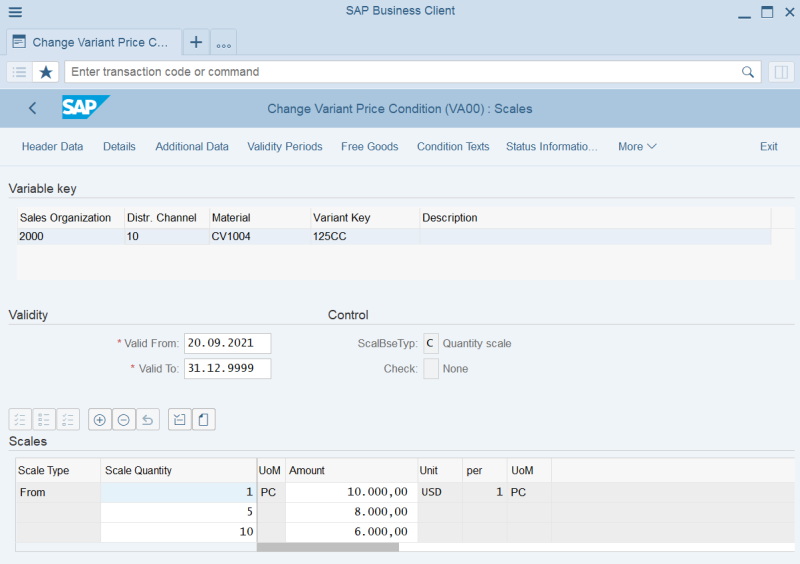Volume Prices
WATCH THE VIDEO
Volume pricing is a pricing strategy that allows discounts for bulk purchases. Typically, the greater the number of products purchased the greater discount.
Volume prices are triggered in the shopping cart based on the business logic coming from SAP S/4HANA, and are shown on the product details page. This way a customer can see the pricing offers directly on the product details page, before ordering the product.
Those condition types which should be used for pricing and discounts calculations in your Sana webstore should be set up on the Pricing Calculation tab. Open the Webstore Configuration Sana app in the SAP Fiori launchpad. Select the necessary webstore and click Edit. Open Pricing and Payment Settings. Use the Pricing Calculation tab to set up the necessary pricing conditions.
For more information, see Pricing Calculation.
To set up volume prices in SAP S/4HANA use the Change Condition (VK12) transaction and the PR00 condition type: VK12 > PR00 > Sales Org. /Distribution Channel/Plant/Sales Unit/Customer.
Select the necessary price condition record or create a new one and click Scales. Using the scale based pricing in SAP S/4HANA, you can set up volume prices.
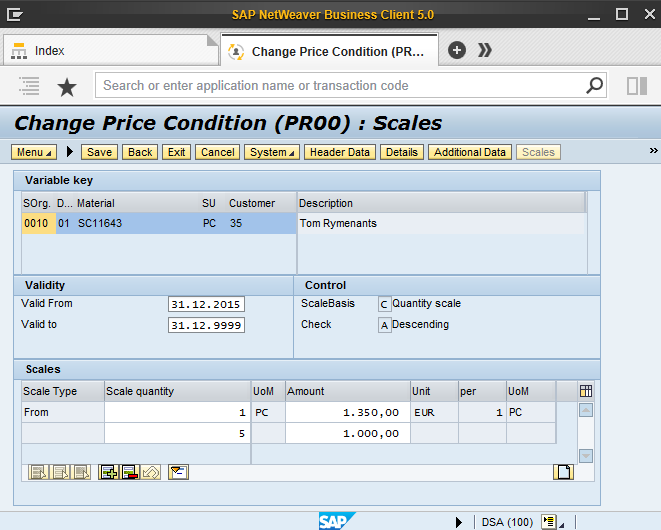
The table below provides the description of the fields in the Scales table.
|
Field |
Description |
|---|---|
|
Scale quantity |
Enter the quantity of products that a customer should purchase to gain the agreed discount. |
|
Amount |
Enter the unit price based on the quantity of products (for example, for 10 pieces the unit price will be 800,00). |
If scale based prices are set for a product in SAP S/4HANA, then in the webstore on the product details page a customer will see a link View volume discount under the product price. Clicking on this link opens the table with volume discounts coming from SAP S/4HANA.
The link View volume discount is shown on the product details page using the View volume discount link content element.
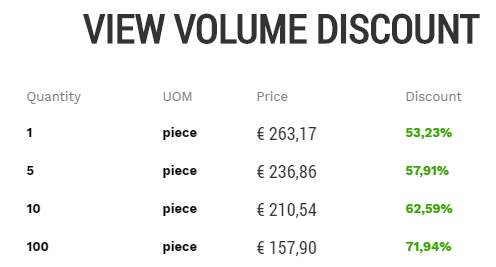
The View volume discount table on the product details page presents the following information:
-
The minimum quantity of items that the customer should purchase in order to gain the agreed discount.
-
Unit of measure (UOM) the customer can order in.
-
The scale based price.
-
The calculated discount.
Set Up Volume Prices for a Product Variant
Applies to: Sana Commerce Cloud 114 and higher in SAP S/4HANA.
In SAP S/4HANA you can set up volume prices for product variants.
To set up volume prices for product variants you can use any price condition type, but by default the VA00 condition type is used in SAP S/4HANA. Therefore, it is also used in this manual.
Those condition types which should be used for pricing and discounts calculations in your Sana webstore should be set up on the Pricing Calculation tab. Open the Webstore Configuration Sana app in the SAP Fiori launchpad. Select the necessary webstore and click Edit. Open Pricing and Payment Settings. Use the Pricing Calculation tab to set up the necessary pricing conditions.
On the Pricing Calculation tab, map the V (Variants) Sana condition class to the VA00 (Variants/Quantity) SAP S/4HANA condition type.
For more information, see Pricing Calculation.
To set up volume prices for the product variants in SAP S/4HANA, use the Change Condition (VK12) transaction and the VA00 condition type.
Select the necessary variant and click Scales. Using the scale based pricing in SAP S/4HANA, you can set up volume prices for product variants.
The table below provides the description of the fields in the Scales table.
|
Field |
Description |
|---|---|
|
Scale quantity |
Enter the quantity of product variants that a customer should purchase to gain the agreed discount. |
|
Amount |
Enter the unit price based on the quantity of product variants (for example, for 10 pieces the unit price will be 800,00). |
If scale based prices are set for a product variant in SAP S/4HANA, then in the webstore on the product details page a customer will see a link View volume discount under the product price. Clicking on this link opens the table with volume discounts for the selected product variant.
